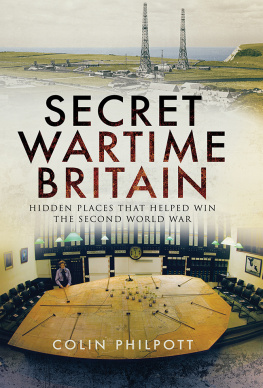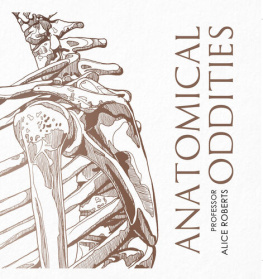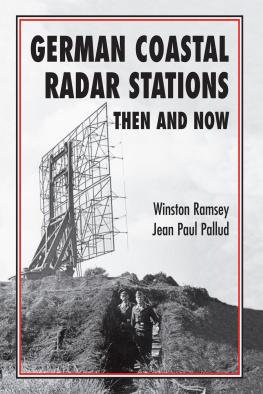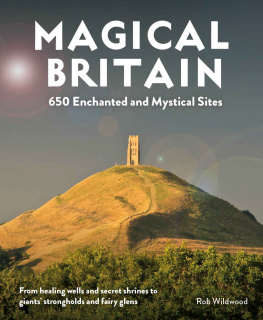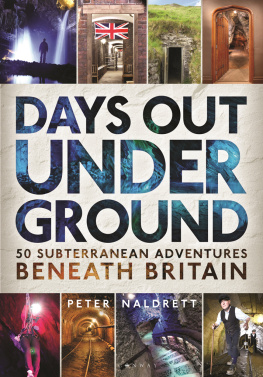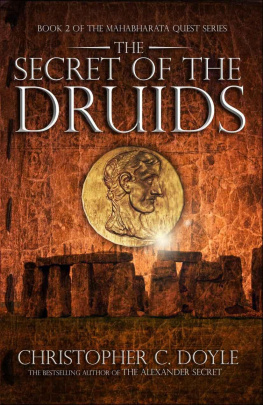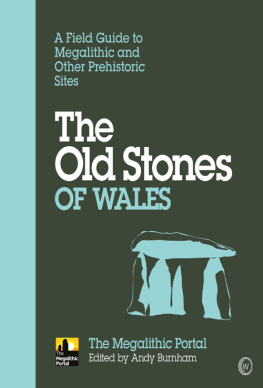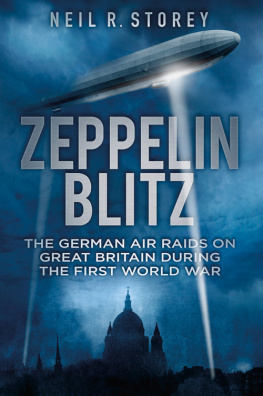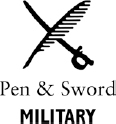Pagebreaks of the print version

Secret Wartime Britain
Secret Wartime Britain
Hidden Places That Helped Win The Second World War
Colin Philpott
First published in Great Britain in 2018 by
Pen & Sword Military
An imprint of
Pen & Sword Books Ltd
Yorkshire Philadelphia
Copyright Colin Philpott 2018
ISBN 978 1 52673 547 8
eISBN 978 1 52673 548 5
Mobi ISBN 978 1 52673 549 2
The right of Colin Philpott to be identified as Author of this work has been asserted by him in accordance with the Copyright, Designs and Patents Act 1988.
A CIP catalogue record for this book is
available from the British Library.
All rights reserved. No part of this book may be reproduced or transmitted in any form or by any means, electronic or mechanical including photocopying, recording or by any information storage and retrieval system, without permission from the Publisher in writing.
Pen & Sword Books Limited incorporates the imprints of Atlas, Archaeology, Aviation, Discovery, Family History, Fiction, History, Maritime, Military, Military Classics, Politics, Select, Transport, True Crime, Air World, Frontline Publishing, Leo Cooper, Remember When, Seaforth Publishing, The Praetorian Press, Wharncliffe Local History, Wharncliffe Transport, Wharncliffe True Crime and White Owl.
For a complete list of Pen & Sword titles please contact
PEN & SWORD BOOKS LIMITED
47 Church Street, Barnsley, South Yorkshire, S70 2AS, England
E-mail:
Website: www.pen-and-sword.co.uk
Or
PEN AND SWORD BOOKS
1950 Lawrence Rd, Havertown, PA 19083, USA
E-mail:
Website: www.penandswordbooks.com
This book is dedicated to my parents and grandparents generations across the world who had to live through all this.
Introduction
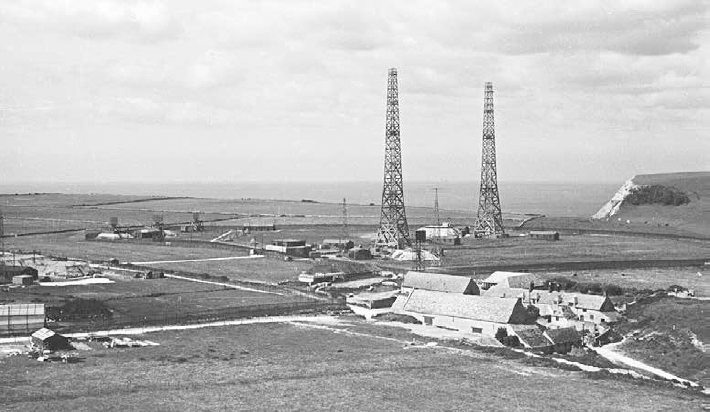
Aerial masts of the Chain Home Radar Station near Worth Matravers on the Isle of Purbeck in Dorset, which was the centre of British radar research from 1940 until 1942. (Purbeck Radar Museum Trust)
Two particular experiences inspired me to write this book. While walking the Dorset section of the South West Coastal Path, I came across a place that was new to me the barely visible remains of the Chain Home Radar Station near Worth Matravers not far from Swanage. This was a vast, hastily-constructed radar station set on the cliff tops overlooking the English Channel. It played a key role in the development of radar which gave the Allies a crucial advantage in the air war with Germany, yet it was just one of thousands of places either built from scratch or fashioned from existing buildings which were pressed into service in the Second World War in the desperate struggle for victory over Nazi Germany. The story of how and why these places were built, what contribution they made to the war effort and what has happened to them after 1945, seemed to me a fascinating one worth telling.
The second experience was even more poignant. It was hearing the stories of people like Evelyn Philp who, as a young woman during the war, worked at the Avro aircraft factory next to what is now Leeds-Bradford Airport in West Yorkshire. She was one of over 10,000 people working there at the height of the war on a shift system which involved twenty-four-hour continuous production. Most of the workers were women and most were conscripted to work at the factory which built almost 700 Lancaster bombers, 4,500 Avro-Ansons and other planes and made a major contribution to the countrys wartime production.
What I found most remarkable about the story of the Avro Factory and of Evelyn Philp was that, despite its vast size, the factory was never bombed. In addition, the overwhelming majority of Evelyn and her colleagues, who had all signed the Official Secrets Act, never spoke about what they did there. In some cases they remained silent for many years after the war. I was keen to understand more about why people did apparently keep quiet about what they did at these locations and how important that was for the successful prosecution of the war.
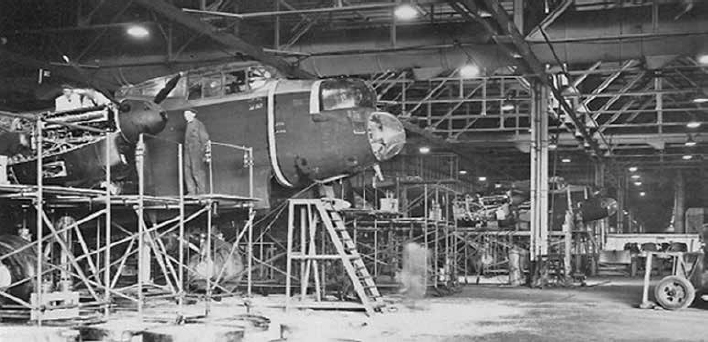
Production line inside the Avro factory near Leeds where 4,500 Avro-Astons and 695 Lancasters, as well as other planes, were produced during the war. (Leeds Library and Information Services)
So, this is a story about both places and people and this book sets out to do two things. It seeks to provide an overview of the largely secret places in Second World War Britain and to tell some of their individual stories. Why were they needed? Why were the particular locations chosen? What were the problems and challenges of getting them built or adapted for war use? Who were the people who worked there and the people who conceived, planned and organised these places?
In telling this story, I am not aiming to be encyclopaedic there are simply too many places. However, I will try to cover all the main categories of places under the following headings factories; command centres; spying and listening bases; broadcasting and propaganda locations; a section on dummy and decoy sites and D-Day deceptions designed to confuse German bombers and intelligence; a chapter on retreats and reserves, including places used by the British Resistance and the stores for the nations art treasures; interrogation and detention centres, including a look at how people who gave away secrets were punished and finally, a visit to the places where Britain researched and made the deadliest of weapons. Within each category, I have attempted to give examples of places rather than try to list them all and, where possible, I have tried to find people associated with the locations and to hear their stories.
The second objective of this book is to examine the secrecy which, to a greater or lesser extent, surrounded these places, most of which, incidentally, were not buried beneath ground. How secret were these locations? How, and indeed, whether the secrecy was maintained? How much did the Germans know? Why does it appear that these places did remain largely hidden from view either literally or metaphorically? And, perhaps most importantly, why was it that ordinary people did apparently respond positively to the Careless Talk Costs Lives message and kept quiet about what they did a silence which many maintained long after victory had been achieved, and which some even took to their graves? Was it the threat of punishment? Was it the effectiveness of propaganda? Was it the fact that mid-twentieth century Britain was still a very hierarchical and deferential society? Was it simply perhaps the case that people knew that they were engaged in an existential struggle?
This is a story which, of course, has to be set in a wider context. Firstly, the military context of the position Britain and her allies found themselves in when attempts to avert war failed in 1939. The popular view is that Britain was ill-prepared to face the well-organised military might of Germany. The traditional narrative tells us that Britain was the plucky underdog who survived against the odds until the Americans were finally persuaded to join the fight. Recently, this view has come under scrutiny from revisionist historians who have argued that Britain was better prepared than often thought, and the Germans less so. Nevertheless, it was undoubtedly the case that, certainly for the first three or four years of the war, arguably longer, victory was by no means assured. After the retreat of British forces from the beaches of Dunkirk, and during the relentless German bombardment of British cities during 1940 and 1941, the outlook was pretty bleak. Against this backdrop, it would not perhaps be surprising that the vast majority of Britons pulled together, part of which included, to use the slang of the time, Keeping Mum about things which might benefit the enemy.

